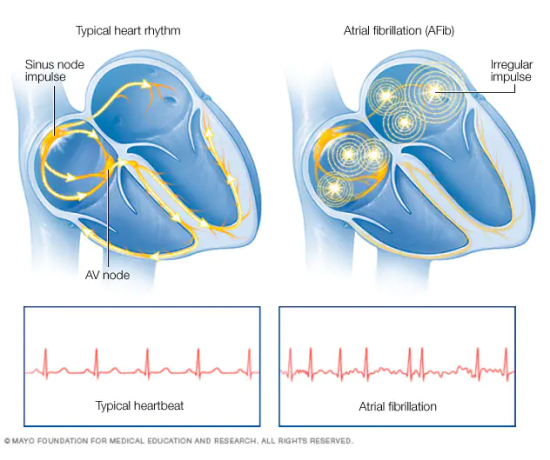Considering an atrial flutter ablation? Let’s first know what an atrial flutter is.
Think of atrial flutter as a glitch in your heart’s upper chambers, known as atria. They beat too fast, shaking instead of pumping. This heart rhythm is not just a quick hiccup. This abnormality can lead to a stroke if not watched. Knowing about this flutter is pivotal to creating a suitable treatment plan for atrial flutter ablation in Chennai.
Learn the facts and find support to stay on track.
Atrial Flutter- An Overview
Atrial flutter is not rare. It is a heart issue that speeds up the beat in the atria. It is a serious issue and can cause strokes if not handled well.
Generally, the heart has a regular beat starting with a sinus node spark. However, with flutter, a short circuit messes this up. It makes a loop, mainly in the right atrium, and the beat rate jumps from 240 to 340 beats per minute.
When the heart beats too quickly, it affects the filling of blood in the atria and alters how the lower chambers, or ventricles, beat. Although the ventricles beat rapidly, they cannot keep up with the pace of the atria. The ratio of atrial to ventricular beats is significant. A 2:1 block means the ventricles beat once for every two atrial beats. Understanding this is crucial for managing the potential health risks.
Differentiating the Types of Atrial Flutter
There are two types of atrial flutter. There is the usual type of flutter, which starts in the right atrium. The electric signals there make a loop, often going backwards around a valve. This loop speeds the beat to about 250 to 350 times a minute.
There is also an unusual type of flutter. It is less common and can happen in either atrium. It does not stick to the valve pattern and can occur after heart surgery. The electric paths in this flutter are less predictable, making it harder to treat. Knowing your flutter type is instrumental to how your doctor treats it.
Identifying Atrial Flutter Symptoms and Emotional Impact
Knowing the symptoms of an atrial flutter is key to seeking the right treatment. The common signs are:
- Feeling your heartbeat.
- Dizziness.
- Passing out.
- Shortness of breath.
- Tiredness.
Risk Factors and Causes of Atrial Flutter
Many factors can lead to flutter. Some you can control, some you can’t. Here is what can up your risk for this arrhythmia:
- Heart failure and high blood pressure.
- Issues with heart valves, past heart attacks, and birth heart conditions.
- Too much exercise, especially for long-distance athletes, and untreated sleep issues.
- Other health problems like thyroid, lung, and diabetes issues.
By watching these risks, you might avoid flutter. Let us look at how doctors find and monitor this condition.
Diagnosing and Monitoring Atrial Flutter
An ECG is the first step in diagnosing an atrial flutter. It records your heart’s electric activity to see the flutter pattern. If flutter is hard to track, a Holter or event monitor can track it longer. Spotting it right is key to handling flutter and preventing other issues.
It's important to monitor flutter as it can persist. Understanding your heart's rhythm can help your doctor select suitable treatments for a healthy and active lifestyle.
Atrial Flutter Treatment Options
Handling flutter can mean different things. Your doctor might consider:
- Drugs like calcium channel blockers and beta blockers
- Antiarrhythmic drugs
- Blood thinners
- Catheter ablation
- Cardioversion
These treatments keep your heart well and stop flutter issues. With the right plan, you can stay active.
Embracing a Heart Healthy Future
Your heart needs good care with atrial flutter. Staying on a healthy heart path and following the doctor's advice is a must. Consult with your cardiac electrophysiologist in Chennai. Follow up with regular appointments. Taking steps now can guard your heart for the future.

